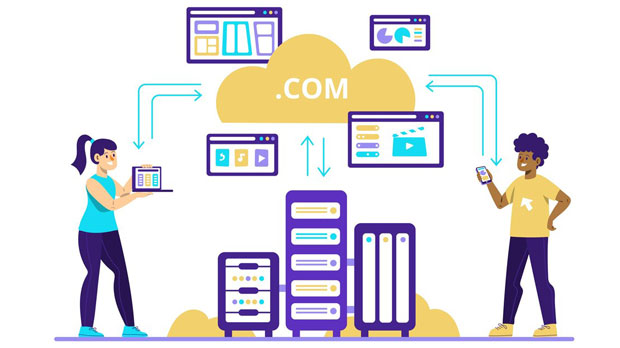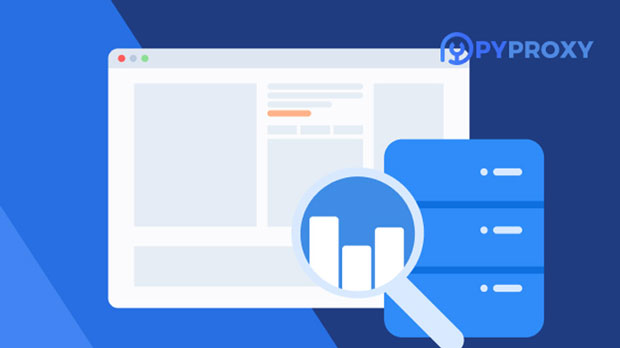A proxy is an intermediary between a user’s device and the internet, handling requests made by the user and directing them to the appropriate server. Essentially, it acts as a middleman, ensuring the user's request is properly handled while offering various benefits, such as increased security, privacy, and access control. In network communication, a proxy server can be used to mask the user's IP address, bypass geographic restrictions, and manage internet traffic. This article explores the meaning of proxy servers, their roles in network communication, and how they are leveraged for enhanced security and performance. Understanding Proxy: A Detailed OverviewA proxy server, in its most basic form, is a server that sits between a client and a destination server, forwarding requests from the client and then receiving the response. The concept of proxying is deeply ingrained in internet infrastructure, ensuring smooth communication between systems. When a user makes a request for a web page, for example, the request goes to the proxy server first, which then forwards the request to the destination server. Once the server responds, the proxy server forwards the data back to the user. This process shields the user’s device from directly communicating with the destination server, offering various benefits.The Different Types of Proxy ServersThere are several types of proxy servers, each designed for specific purposes. Let’s explore the most common ones:1. Forward Proxy: This is the most commonly used proxy type, often employed in corporate networks. A forward proxy sits between the client (the user’s device) and the internet, directing requests from the client to the appropriate server. 2. Reverse Proxy: Unlike a forward proxy, a reverse proxy is used by servers to handle requests from users. It sits between the user and the web server, often providing load balancing, security, and caching functionalities. 3. Transparent Proxy: A transparent proxy intercepts communication between the user and the internet without modifying the requests or responses. It is mostly used for content filtering and monitoring purposes. 4. Anonymous Proxy: This proxy type hides the user's IP address to ensure privacy. It sends requests to the destination server on behalf of the user, masking the user's identity.5. High Anonymity Proxy: Similar to anonymous proxies, high anonymity proxies provide stronger protection by not revealing any information about the user’s original IP address.Why Use a Proxy? The Benefits of Proxy Servers in Network CommunicationUsing proxy servers offers several benefits that enhance network performance, security, and user privacy. Here are some key advantages of using proxy servers:1. Enhanced Privacy and Anonymity: One of the main reasons for using a proxy server is to protect the user’s identity. By masking the original IP address, a proxy ensures that the destination server cannot trace the request back to the user’s device. This is particularly valuable in scenarios where users wish to browse the web without leaving a trace.2. Bypassing Geographic Restrictions: Many websites impose geographical restrictions on their content. A proxy server allows users to access restricted content by acting as if they are browsing from a different location. This is useful for accessing region-specific media, such as video streaming services, or bypassing government censorship.3. Improved Security: Proxy servers can act as a barrier between the user’s device and potential threats from the internet. They can filter harmful content, prevent malware attacks, and block access to unsafe websites. In corporate environments, proxies help to maintain a secure network by controlling which sites employees can visit.4. Caching and Load Balancing: Proxy servers can cache frequently accessed content, reducing the load on the destination server and improving load times for users. Reverse proxies are often used for load balancing, distributing incoming requests across multiple servers to ensure that no single server is overwhelmed with traffic.5. Content Filtering: Proxies can be used to filter and control content. In corporate networks or educational institutions, proxies are commonly used to block access to certain websites or types of content, ensuring that employees or students are using the internet responsibly.How Proxy Servers Function in Network CommunicationProxy servers play an essential role in network communication by handling requests and responses between users and the internet. Here’s a step-by-step breakdown of how proxy servers function:1. Request Interception: When a user makes a request to access a website, the request is first sent to the proxy server. The proxy evaluates the request based on its configuration. 2. Request Forwarding: If the request is legitimate and not blocked by any filter, the proxy server forwards the request to the destination server. 3. Response Handling: The destination server processes the request and sends the response back to the proxy server. 4. Returning the Response: The proxy server then sends the data back to the user’s device. If the proxy has cached the requested content, it may provide a faster response by serving the cached version, reducing the load on the destination server.Proxy Server Use Cases in Different IndustriesThe applications of proxy servers are vast and varied. Below are a few key industries that benefit from proxy servers:1. Corporate Networks: In businesses, proxies help with managing internet access, improving security, and optimizing network performance. They allow administrators to monitor employee browsing activities, ensure compliance with company policies, and block malicious websites.2. Media and Entertainment: Content providers, like streaming services, often use proxies to control access to their content based on geographic location. Viewers in restricted regions can use proxies to bypass these geo-restrictions and access the content.3. Online Security: Proxy servers are commonly used in online security applications. They can protect sensitive data, ensure secure browsing, and prevent attacks like Distributed Denial of Service (DDoS).4. E-Commerce: E-commerce websites use proxies to enhance the security of online transactions, monitor user activity, and analyze trends in consumer behavior.Challenges and Considerations When Using Proxy ServersWhile proxy servers provide numerous benefits, there are some challenges and considerations that users must be aware of when using them:1. Performance Overhead: Proxy servers introduce additional layers in the communication process, which may cause delays. Especially when proxies are handling heavy traffic, it can result in performance degradation.2. Security Risks: While proxies can enhance security, poorly configured proxies or malicious proxies could be a security risk. Users must ensure they use reputable proxy providers and correctly configure their proxy settings.3. Bypassing Detection: Many websites and services employ measures to detect and block traffic coming from known proxies. This means that using a proxy does not guarantee complete anonymity or unrestricted access.Conclusion: The Future of Proxy Servers in Network CommunicationProxy servers continue to play a vital role in the world of network communication. As the demand for online privacy, security, and unrestricted access grows, proxies will remain an essential tool for individuals and businesses alike. Whether for enhancing security, bypassing restrictions, or improving performance, proxies will evolve to meet the ever-changing needs of the digital landscape. As internet communication becomes more complex, the role of proxy servers in ensuring safe, efficient, and secure browsing will only become more significant.
Jun 19, 2025



































































